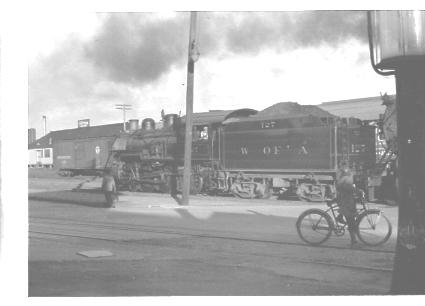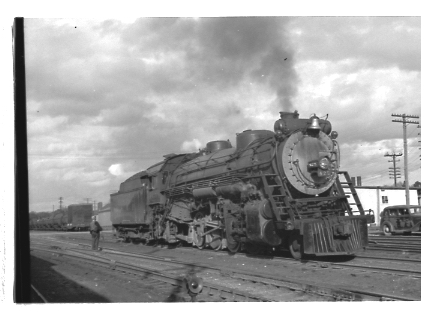In the 1830s, the presence of railways in South Carolina inspired the building of Georgia railroads. When Georgia businessmen saw how easily cotton was being transported in other states, various railroad companies were chartered and began laying tracks.
The Atlanta and LaGrange Rail Road was chartered in 1847 and completed in 1854. This 80-mile line started 6 miles Southwest of Atlanta, in East Point, and ended in LaGrange and West Point. It was renamed Atlanta & West Point Rail Road (A & WP) in 1857.
The Montgomery Rail Road (completed in 1851) ran between Montgomery, Alabama and West Point, Georgia. The Montgomery Rail Road and A & WP Rail Road used two different size rails, so when the trains entered West Point the cars had to be swapped to a different rail. This process took some time and sometimes required passengers to stay in West Point overnight, which was good for the local hotel business. The Chattahoochee House hotel was sold to the A & WP Rail Road in the 1850s.


Railroad companies faced some opposition as they continued laying tracks throughout Georgia and Alabama. In places where tracks didn’t meet, stagecoaches would complete connections by transporting passengers and goods to the next train. As the railroad system progressed, stagecoach drivers opposed the connections as they watched their routes and livelihood shrink.
West Point originally followed Baltimore’s model and prevented the railroad from crossing the Chattahoochee River and entering town. Teamsters would meet the train to transfer the goods and passengers across a wagon bridge. Teamsters, mindful of their job security, argued against a railroad bridge over the Chattahoochee. Eventually, West Point citizens were convinced that it was in their best interest to build the railroad bridge to allow the trains into town.
The railroad system was integral to both sides during the Civil War, and much of Georgia’s tracks were damaged or destroyed in efforts to cripple the Confederacy. In July 1865, Union cavalries raided the railroad under the command of Lovell Rousseau. Rousseau’s troops managed to destroy 30 miles of track on the Montgomery & West Point Route and burned some railroad stations and warehouses.
Following the war, is was necessary to repair and rebuild tracks, and Georgia’s rails were standardized to a consistent size, eliminating the need to swap cars in West Point.
In 1898, a group of bankers published a booklet called “The heart of the South along the line of the Atlanta and West Point R.R. and the western railway of Alabama”, which was created to promote the area. LaGrange and West Point were heavily featured in the book. It tells of the educational opportunities at LaGrange Female College (now LaGrange College) and boasts of the area’s beauty and the health of its population.
In the 1860s, Troup County grist mills were being converted into textile mills for the South’s abundant cotton supply, resulting in a thriving economy. Fresh picked cotton was brought by wagon into the nearest town, where the bales were purchased and shipped to textile mills, often by train. Once the mills created textile goods from the cotton, trains distributed the goods throughout the country and to the coast for exporting overseas.
Improvements in locomotives and the invention of automatic block signals in 1922 greatly improved business for a time, but the A & WP Rail Road struggled during and following the Great Depression. They narrowly avoided bankruptcy but were again showing profits by 1936.
World War II saw a resurgence of railroad prosperity and innovations continued to change railway function. Diesel replaced steam locomotives by 1954, and dining and sleeper cars were popular.
By the 1960s, however, passenger train business had declined significantly, and the West Point Route canceled many passenger trains. Business dropped, even more, when the U.S. Post Office discontinued its mail contracts with the railroad.
Individual railroad systems were slowly swallowed by the Family Lines System, and the West Point Route officially disappeared in January 1983.
The Troup County railroad history is a tale of necessity, innovation, and changing times. While the existing train tracks that are still in use travel the same path as those long-ago trains, few other signs remain of this integral part of our local story.